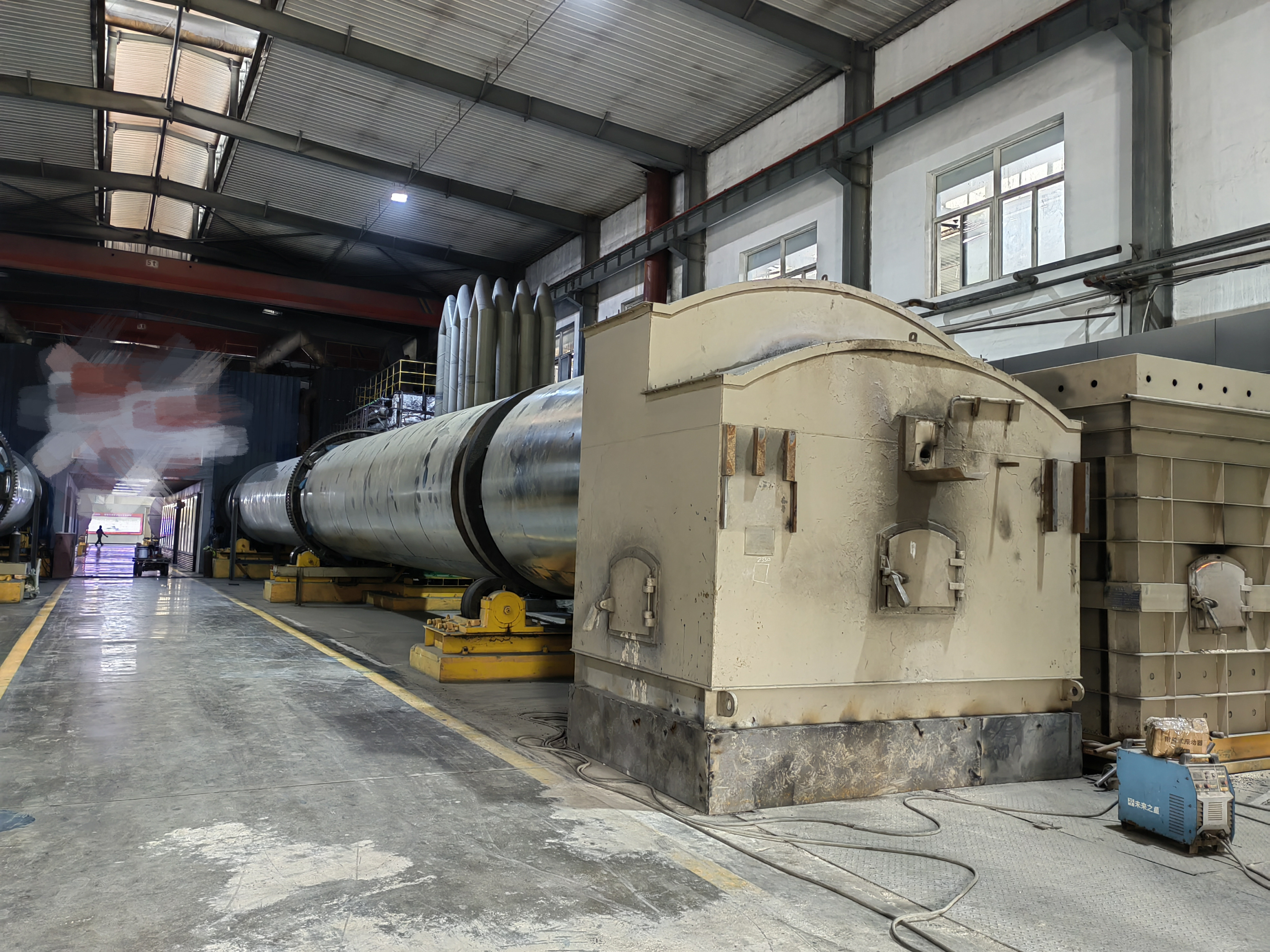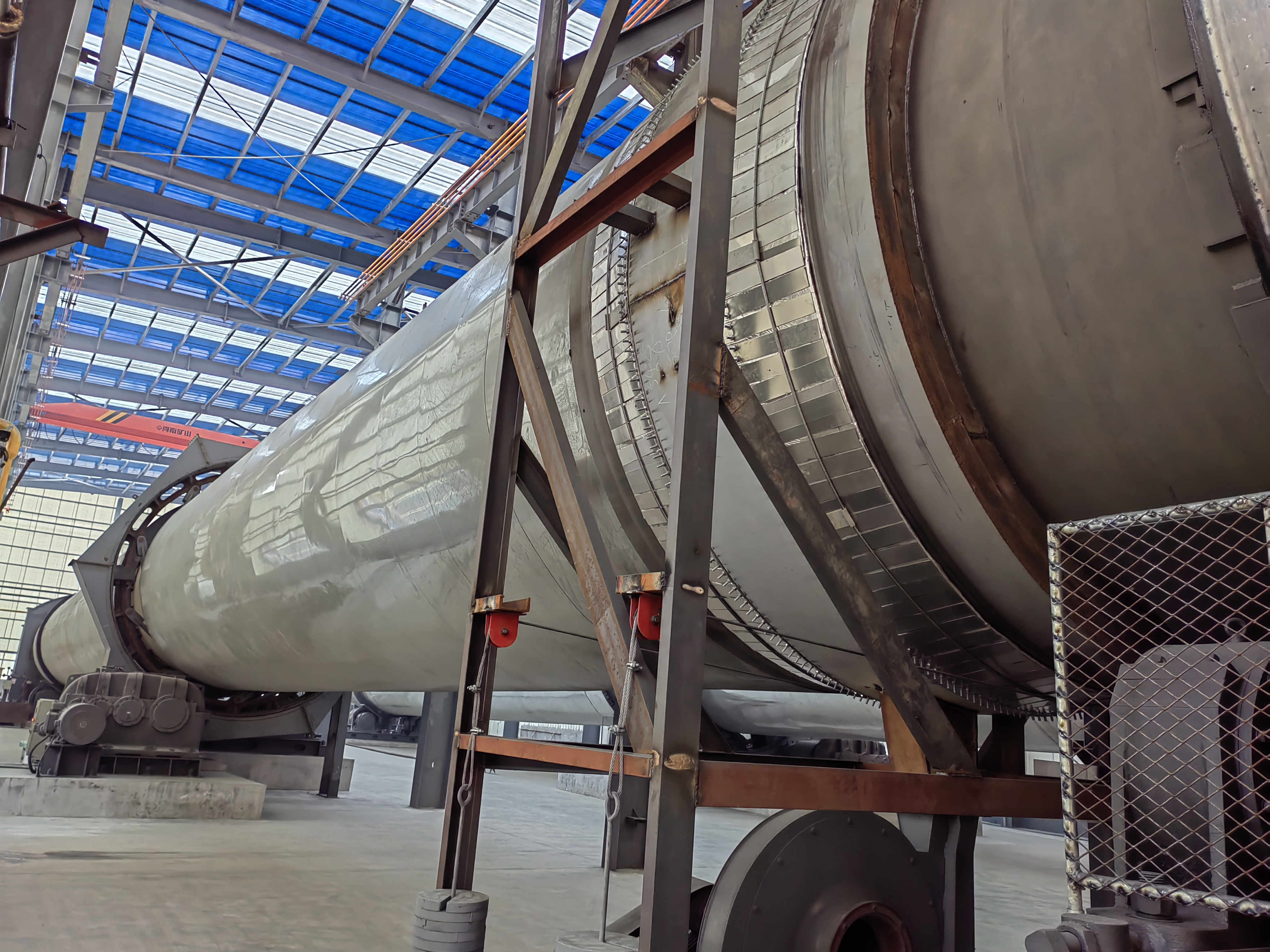Technological Innovation | New Energy-Saving Rotary Kiln
Published:
2025-05-11 10:08
Source:
Molybdenum iron roasting energy-saving rotary kiln As the most important equipment in the roasting process, after several technological updates, it has matured. However, in actual operation, due to limitations in its internal structure, there are several drawbacks and problems :
1. There is a high temperature difference between the inner cylinder and the outer cylinder, requiring the configuration of an expansion device. This structure will have problems such as cracking and damage after long-term use.
2. The castable at the expansion device needs to reserve expansion gaps, and the thermal expansion and deformation of the cylinder at this point is concentrated, making the castable easy to fall off and damage, which in turn causes erosion and deformation of the cylinder.
3. After long-term use, after the insulation material is carbonized, the construction difficulty of repairing or replacing the insulation material is high, requiring the entire inner cylinder and castable to be moved, the inner cylinder needs to be destroyed and remade, and the construction cycle and difficulty are high.
4. The insulation layer at the expansion joint is relatively thin, and the insulation effect is not good; the inner cylinder annular support flange conducts heat. Due to the above two reasons, an annular high-temperature zone appears on the outer cylinder.
5. The utilization rate inside the cylinder is not high. Since the output is proportional to the square of the effective inner diameter of the kiln body, the output is not high.
New energy-saving rotary kiln Change the rotary kiln cylinder air duct 、 Insulation layer structure Successfully solved the above problems, compared with the previous energy-saving rotary kiln, there are several advantages :
1. For rotary kilns of the same specification, the effective inner diameter is increased. For equipment of the same specification, the output is increased by more than 20%.
2. Internal is integral structure ,without expansion device, no cylinder cracking and damage.
3. The entire cylinder expansion is uniform ,there is no concentrated telescopic position, avoiding the problem of local castable falling off. And the thickness of the castable is increased to 120mm, greatly improving the service life of the castable.
4. The insulation layer is set outside the cylinder ,replacing or repairing the insulation layer does not require moving the inner cylinder and castable, and replacing it from the outside, construction is simple and fast 捷。
5. Insulation construction is carried out on the entire outer side of the cylinder ,the construction effect is better, and it can better ensure its insulation effect.
6. Using heat-exchanged hot air to enter the rotary kiln further increases equipment output per unit time.
7. More suitable for old product transformation 。
On-site pictures of the new energy-saving rotary kiln for molybdenum iron roasting




Related News
3x36 meter diameter externally heated rotary kiln begins shipping
Development and shipment of a 3x36 meter external heating rotary kiln support wheel device
DMC290 bag-type pulse dust collector, independently developed by Chaoyang Heavy Machinery Equipment Development Co., Ltd. (hereinafter referred to as "Chaoyang Development"), has recently begun shipping and installation.


